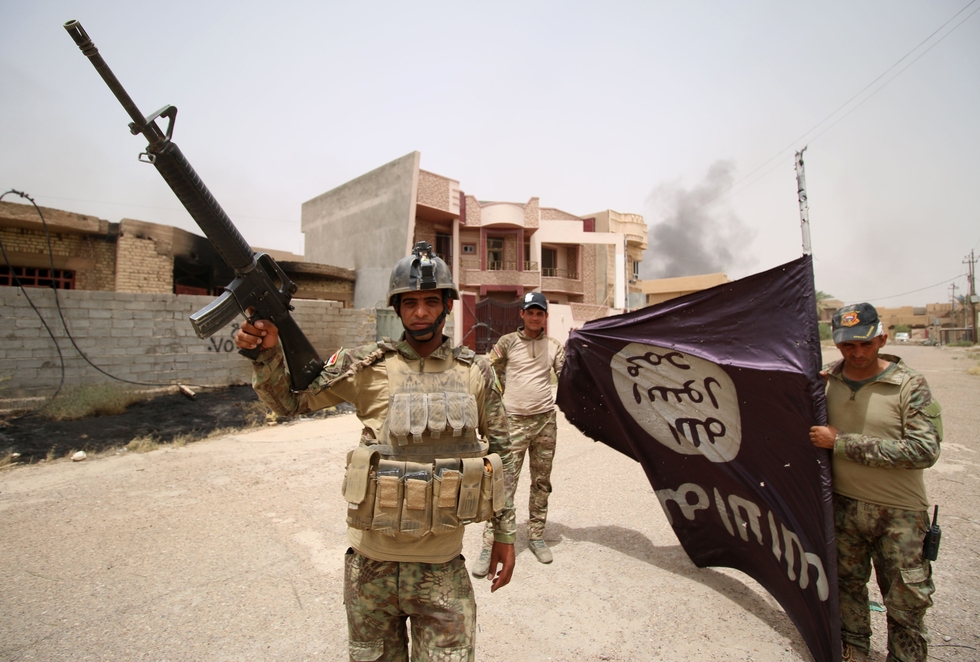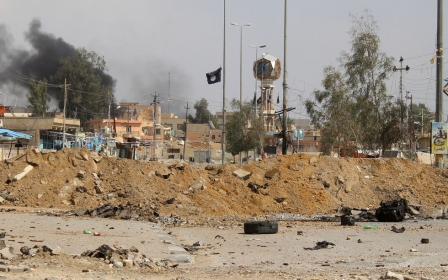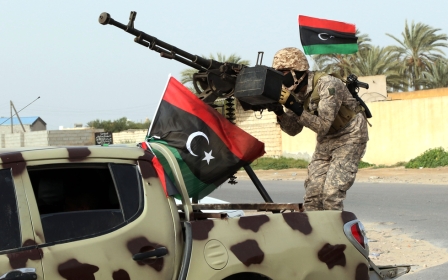Let’s not be overly optimistic about an imminent demise of IS

Two years ago, the whole world woke up to the news that the so-called Islamic State (IS) had seized Iraq’s second largest city of Mosul in a shocking defeat for the Iraqi army. The principal strategy of IS was based on shows of strength and the seizure of territory over which it imposed its authority. Having done this, IS was in a position to declare an Islamic caliphate straddling Syria and Iraq by the end of June 2014.
As a result of this seismic shift in the geopolitics of the Middle East region, an international coalition under American leadership was announced to eliminate IS. But after two years of the organisation's ascendency, question marks hang over the US-led strategy to confront and eliminate IS.
The seed of sectarianism is still in the ground
The US-led coalition has depended, by and large, on military force as the main instrument to fight IS. Undoubtedly, the territorial expansion of Islamic State has been halted, as the organisation has lost significant territory, including strategic towns and cities. In addition, the offensive capabilities of the organisation, previously seen as formidable, have been undermined by a series of defeats and setbacks. Instead, it has moved into a defensive position.
Despite the relative success of the anti-IS forces in the military field, however, the methods being used in these operations makes failure a likely outcome. While sectarianism and persecution of Sunnis in Iraq was one of the major reasons that led to the emergence of IS, the international coalition has turned a blind eye to the risks of including sectarian elements in the ad hoc anti-IS alliance. This omission will only serve to further ignite the region, by planting the seeds for more sectarian in-fighting and instability.
This has already been seen in the victorious offensives to take back Fallujah from IS led by the Iraqi army. Not only has the professionalism of the Iraqi army been seriously questioned, it is also supported by the controversial participation of the Popular Mobilisation Units (PMUs) under Iranian supervision. Since the start of the latest military offensive three weeks ago, and even when the confrontations were still on the outskirts of the city, sectarian killings have been taking place. For instance, Shia militias have committed sectarian cleansing against Sunni civilians after accusing them of supporting IS.
The Iraqi government, backed by the international coalition and Shia militias, recaptured most of the major centres held by IS such as Tikrit, Bayji and Ramadi - leaving only Mosul city still under IS control.
Many expect an imminent end for IS following this series of defeats on the ground. After the battle for Fallujah, all the forces will likely meet for a potentially decisive battle for Mosul, considered IS's capital in Iraq. But will victory in this battle mean that IS is definitively uprooted from the region?
This is unlikely, because tackling a phenomenon using methods that in themselves caused the phenomenon in the first place is doomed to failure. If matters continue as they have until now, without a just settlement for all sects, extremist sectarian groups will rise from the ashes of any military defeat of IS. In retrospect, it is obvious that the Sunni crisis was steadily intensifying as US forces pulled out until 2013 at which point IS emerged, presenting itself as the protector of Sunnis.
IS exploited the persecution of Sunnis and the encroachment of Shia groups supervised by Iranian advisors. Although IS didn’t have the support of the majority of Sunnis, it at least secured their neutrality since many saw the extremism of IS as a counter force to the prejudice of the government and its allies. As long as sectarian-based policies continue, extremism will likely surface again under different names, organisations and sects.
Kurdish militants are not the key
In Syria, initial US support for the Syrian opposition’s demands for a future without President Bashar al-Assad have been downgraded as fighting IS became America’s strategic priority. Because the international coalition’s mission didn’t extend to boots on the ground, and the opposition remained committed to fighting the Assad regime, this meant that - unlike in Iraq - there was no conventional ground force to take the fight to IS.
The US’s failure to find a solid ally on the ground led to an American-Kurdish alliance. The Syrian Kurdish militants, under the leadership of the Democratic Union Party (PYD), have an identical vision to America’s, that defeating IS must take priority over removing the Assad regime. In addition, Syrian Kurds found this alliance an opportunity to ease the way to their own long-awaited state.
The clear progress of this alliance was seen in the northern strip of the Syrian border with Turkey. Defeating IS in these territories cut off the gateway through which foreign fighters came to join IS. But it is questionable to what extent Kurdish militants can be a real threat to IS in Syria and continue to achieve victories. The answer is not much.
The Kurds battling in the northern towns have sought to change the demographic balance by moving Kurds into these areas. Kicking IS out is a necessary step to protect the Kurdish population and establish a Kurdish state. To be precise, they fight in their lands amid the residents’ welcome and support, but this is not the case in Arab-populated cities, like Raqqa, where people are apprehensive about ethnic cleansing.
The suspicions over Kurdish forces have due cause, since for the Kurds to achieve the dream of their own state they have carried out ethnic cleansing against Arabs. In order to create a continuous geographic unity for the perceived state, the Kurdish People’s Protection Units (YPG) have evicted Arabs and Turkmen and committed killings in the northern suburbs of al-Hasakah such as Qamishli and Tell Hamees. These actions have caused a societal cleavage, and thwart the possibilities of forming a stable alliance on the ground to end IS rule.
The Syrian Democratic Forces (SDF), a nascent alliance which includes mainstream of Kurds and a modest participation of Arabs, is an example of how ethnic fears still overshadow relationships. A report in the Guardian newspaper exposed the mistrust amongst SDF fighters and the marginalisation of Arabs in the ongoing battle to take Manbij from IS.
A recapture of Raqqa, the stronghold of IS in Syria, will demand a more effective force than Kurdish militants. Like Mosul in Iraq, the city is still in IS hands despite the great power of anti-IS forces surrounding it. It is better to reconsider the approach in Syria, instead of gambling on ethnic units which would most likely muddy the waters.
IS not Russia's main target
The Russian intervention in Syria came to the rescue of Assad’s government, which was on the verge of collapse last summer. Russia didn’t only target IS in its air assaults, but included any group that “looks like a terrorist, walks like a terrorist,"as Russian Foreign Minister Sergey Lavrov said. In plain English, this intervention was designed to smash the opposition forces in the western part of Syria more than IS, and that actually has come to pass.
Put simply, the Assad leadership is keen to keep IS on the Syrian scene because it knows the West prioritises defeating IS over Assad’s removal. As long as IS remains a threat, Assad knows the West will not come after him. It is no surprise that Assad’s forces have coordinated clandestinely with IS, as is shown in documents exposed by Sky News revealing what took place during the battle of Palmyra. Russia realises that the existence of IS provides a lifeline to the Syrian regime. It would be frivolous to assume that the Russian intervention might put an end to IS in Syria.
The defective strategies being employed to fight IS will undoubtedly weaken its military capabilities for a short time, but by using sectarian and ethnic forces in this fight, the anti-IS alliance is making the return of IS, and its offspring, inevitable.
-Menwer Masalmeh is a Palestinian journalist based in the UK, writes about Middle East affairs. You can follow him on Twitter @MinwerMasalmeh.
The views expressed in this article belong to the author and do not necessarily reflect the editorial policy of Middle East Eye.
Photo: Iraqi pro-government forces hold an Islamic State (IS) group flag in the al-Dhubat II (Officers) neighbourhood of Fallujah as they try to clear the city of IS fighters still holed up in the former militant bastion on 19 June, 2016 (AFP).
This article is available in French on Middle East Eye French edition.
Middle East Eye propose une couverture et une analyse indépendantes et incomparables du Moyen-Orient, de l’Afrique du Nord et d’autres régions du monde. Pour en savoir plus sur la reprise de ce contenu et les frais qui s’appliquent, veuillez remplir ce formulaire [en anglais]. Pour en savoir plus sur MEE, cliquez ici [en anglais].





